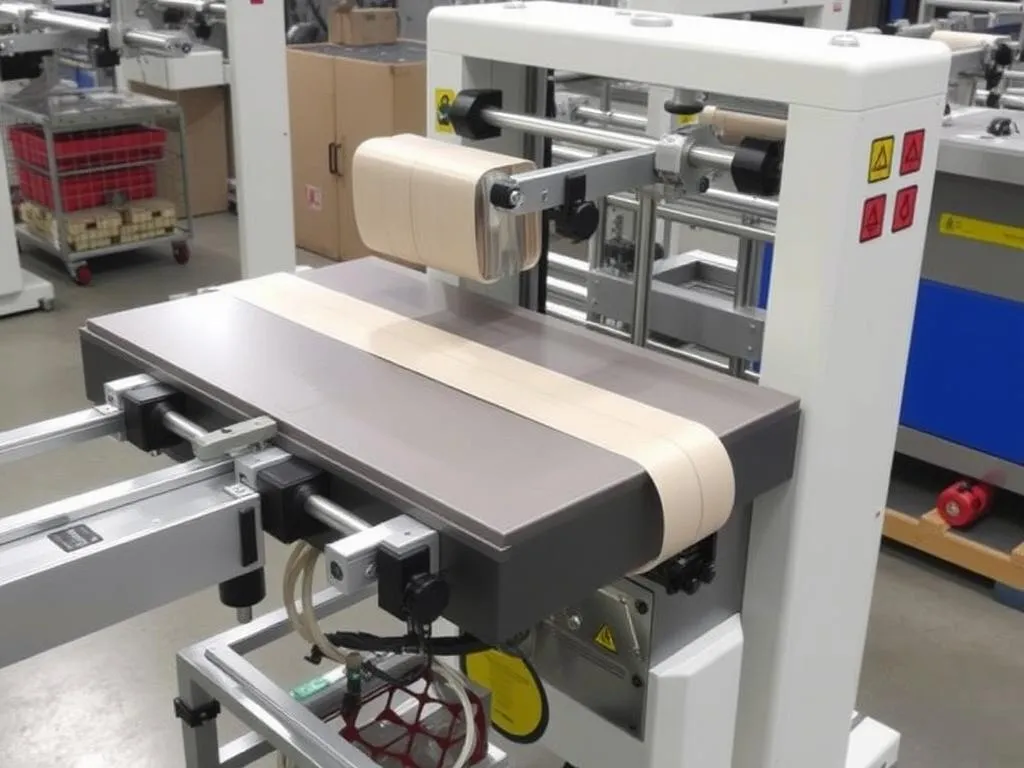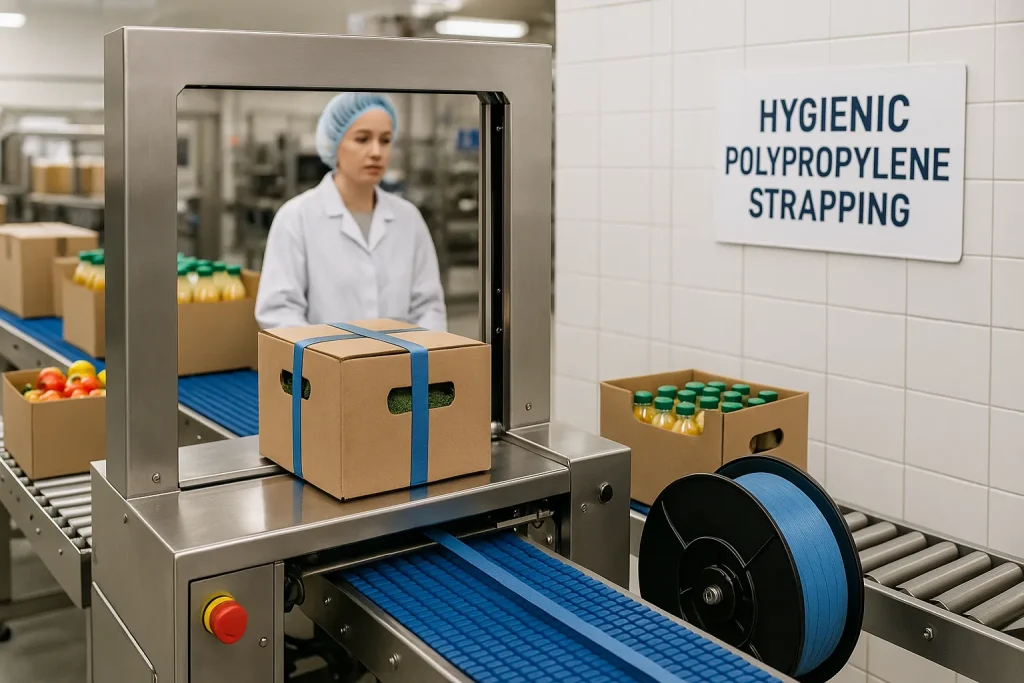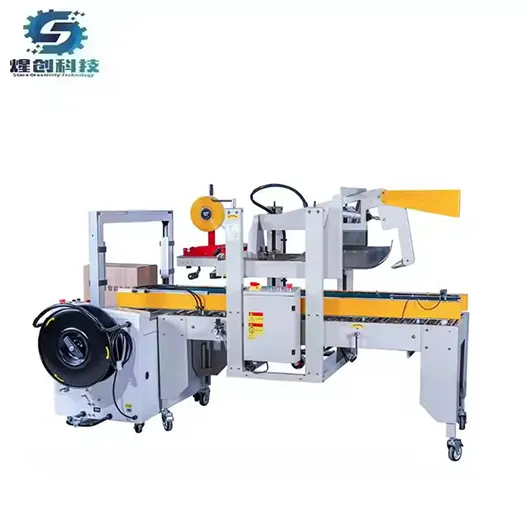Si votre demande n'est pas traitée dans les plus brefs délais, veuillez indiquer votre adresse WhatsApp/Skype dans le message, afin que nous puissions vous contacter dès la première fois.
Nous vous répondrons dans les 24 heures. En cas d'urgence, veuillez ajouter WhatsApp/WeChat : ,. Ou appelez-nous directement.
Are your packaging lines costing you time, money, and resources? Cerclage manuel processes can be a major pain point for manufacturing operations. Workers struggle with consistency issues, productivity bottlenecks, and even injuries from repetitive motions.
Every minute lost in packaging means delayed shipments and unhappy customers. And with labor costs rising worldwide, relying on manual packaging isn’t just inefficient—it’s increasingly expensive.
But there’s a smarter way to handle your packaging needs. Automatic strapping machines represent the future of efficient, reliable, and cost-effective packaging solutions.
An automatic strapping machine is a packaging equipment that puts straps around items with little or no help from people. These machines make boxes, pallets, and other products ready for shipping without much human work.

Automatic strapping machines use advanced mechanics to feed, tension, seal, and cut strapping material in one smooth process. The core components include:
Unlike manual methods, these machines create consistent tension and reliable seals every time.
When choosing a strapping machine, it’s important to know the different types:
| Type | Caractéristiques | Meilleur pour |
|---|---|---|
| Semi-automatic Strapping Machines | Operator places strap, machine tensions and seals | Small to medium volume operations |
| Fully automatic Strapping Machines | Complete strap cycle without operator | High-volume production lines |
| Overhead Strapping Machines | Straps from top of package | Tall or odd-shaped items |
| Horizontal Strapping Machines | Straps from side | Wide packages on conveyors |
Some manufacturers like Créativité des étoiles offer modular designs that can be customized to specific production needs, making them adaptable for various industries from food packaging to logistics.
The shift to automatic strapping brings remarkable improvements to packaging operations:
Automatic strapping machines have transformed packaging across multiple industries.
Food & Beverage
The food industry demands hygienic packaging solutions. Automatic strapping machines with PP (polypropylene) strapping provide clean, food-safe bundling for products. With 90% adoption in European pharma packaging, these machines meet strict safety standards.
Manufacturing
In manufacturing plants, bundling heavy parts requires strong, consistent strapping. Steel strapping for construction materials achieves 50% faster bundling times compared to manual methods.
Commerce électronique
Online retailers need speed and reliability. Automatic strapping systems can process boxes in under 10 seconds each, with 30% reduction in shipping damage compared to manual strapping.
Automobile
Parts bundling in automotive manufacturing benefits from robotic integration, gaining 20% efficiency improvements when strapping machines are incorporated into production lines.

Most businesses see a quick return on investment with automatic strapping machines:
With maintenance costs of only $500-$1,000 per year (compared to $3,000 for manual systems), the total cost of ownership makes automatic strapping machines an easy decision for operations managers looking to improve efficiency.
When selecting an automatic strapping machine for your facility, consider these important technical factors:
Strap Compatibility
Modern machines can work with different strap materials:
Tension Force
Different products need different tension levels. Look for machines offering:
Size Compatibility
Consider your package dimensions:
Integration Capabilities
Les principaux fabricants tels que Créativité des étoiles design machines with full integration options for ERP systems, allowing for better tracking, maintenance scheduling, and production reporting.
Safety should be a top priority. Look for:
The best automatic strapping machines are built to last:
Companies with global presence, like those with export experience to 80+ countries, typically offer better long-term support and spare parts availability.
Before investing in an automatic strapping machine, consider these factors:
Automatic strapping machines come in different price ranges:
Many suppliers offer leasing options that can reduce total cost of ownership by 15-20% over a three-year period, making advanced technology more accessible for small and medium enterprises.
Match the machine to your production volume:
Top brands in the automatic strapping machine market include:
When evaluating brands, look beyond the machine itself to consider:
Modern automatic strapping machines offer important sustainability benefits:
Companies focused on sustainability should look for machines designed with energy-saving features such as sleep modes during production pauses and optimized motors that reduce power consumption.

A mid-sized food processor was struggling with inconsistent packaging that led to product damage during shipping. After installing an automatic strapping machine with customized settings for different product lines, they:
An online retailer facing rapid growth couldn’t keep up with manual strapping processes. Implementing a fully automatic strapping machine:
A metal parts manufacturer needed consistent bundling for heavy components. Their automatic strapping solution:
How much maintenance do automatic strapping machines require?
Most modern machines need minimal maintenance. Lubrication-free models may only require quarterly inspections of wear parts and periodic cleaning of dust and debris. Manufacturers like Créativité des étoiles design machines with easy-access maintenance points and modular components that simplify service.
Can automatic strapping machines handle irregularly shaped loads?
Yes, many automatic strapping machines can accommodate irregular shapes. Advanced models feature adjustable sensors and custom strap patterns that can be programmed for specific product types. Optional accessories like corner protectors and specialized guides help manage unusual package dimensions.
What’s the typical ROI timeline for an automatic strapping machine?
Most companies see full return on investment within 6-18 months, depending on production volume. High-volume operations with 1,000+ straps per day may achieve ROI in as little as 4 months. The combination of labor savings, reduced material usage, and faster production typically delivers quick financial benefits.
Are automatic strapping machines difficult to integrate with existing production lines?
Modern automatic strapping machines are designed for easy integration. The best manufacturers offer modular designs that can connect to existing conveyors and production equipment. Some suppliers, like those with over 3,000㎡ of production facilities and specialized technical teams, provide custom integration solutions tailored to specific production environments.
How do I choose between polypropylene, polyester, or steel strapping?
The choice depends on your product:
Your automatic strapping machine should be compatible with the appropriate strap type for your products.
When selecting an automatic strapping machine for your operation, consider these key factors:
The right automatic strapping machine can transform your packaging operation from a bottleneck into a competitive advantage. Companies with experience in R&D, production, and customization of automatic packaging equipment are often best positioned to help you find the perfect solution for your specific needs.
Automatic strapping machines represent a smart investment for manufacturing operations looking to boost efficiency, reduce costs, and improve packaging consistency. With labor savings of up to 70%, cycle time improvements of 5x or more, and quick ROI timelines of 6-18 months, these machines deliver clear business benefits.
As packaging demands continue to increase across industries from food and beverage to e-commerce and logistics, automatic strapping technology offers a proven solution to the problems of manual packaging: inconsistency, slow speeds, and high labor costs.
For operations seeking complete packaging solutions, companies with comprehensive manufacturing capabilities and global export experience can provide both the equipment and expertise needed to transform packaging from a challenge into a strength.
The future of efficient packaging is here—and it’s automatic.